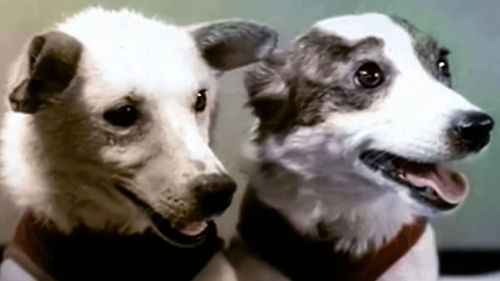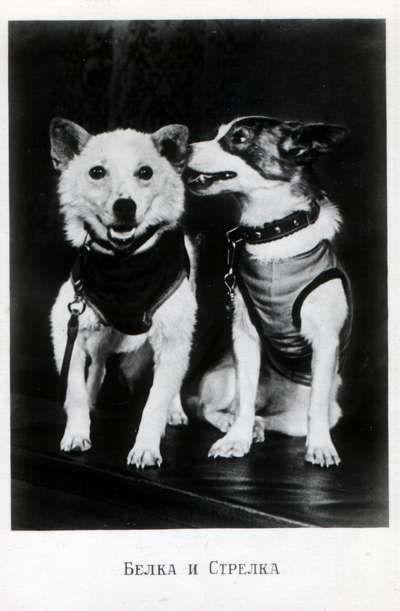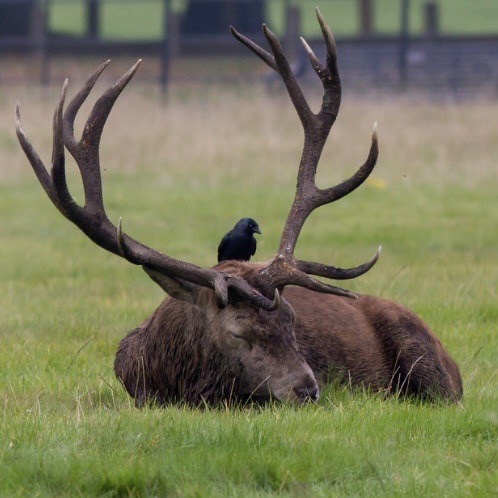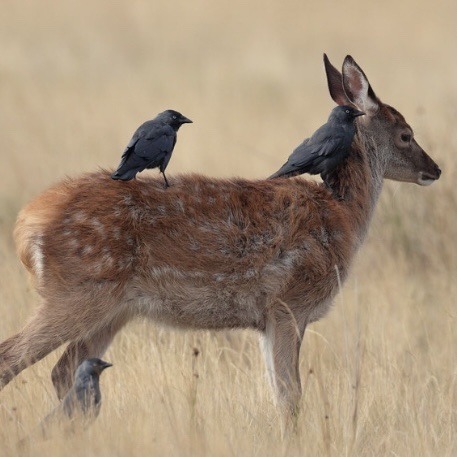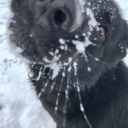Dogmonaut - Space Etc Etc


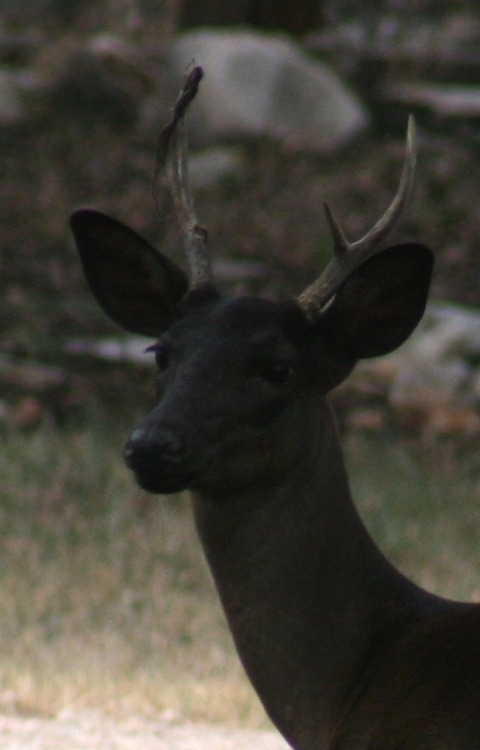

More Posts from Dogmonaut and Others
would you have any pictures/content of dezik and tsygan, the first dogmonauts? i saw a few pics on google, but they wouldn't tell me which is which (though by the name, i assumed tsygan was the black and white one, because 60s). love your blog <3 <3

Hii! I don't have a lot but I'm happy to share what I know. Dezik and Tsygan did a suborbital flight in July 1951. It was top secret at the time and only became known to the public in 1991. Dezik is the white one and Tsygan the black-and-white one.
They were trained before the flight, including the centrifuge.
Their rocket went up 101 km to the edge of atmosphere. The flight lasted about 20 minutes. They spent 4 minutes in zero gravity.
They landed about 20 km from the starting point and were both in good health.
A week later, Tsygan did another suborbital flight (partnered with a dog called Lisa). The parachute didn't open on landing, so unfortunately they both died. :'(
Dezik was adopted by one of the space engineers and lived the rest of his life with the family.


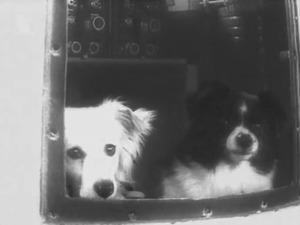


PS: dogmonauts! :D

A simulated image of NASA’s Nancy Grace Roman Space Telescope’s future observations toward the center of our galaxy, spanning less than 1 percent of the total area of Roman’s Galactic Bulge Time-Domain Survey. The simulated stars were drawn from the Besançon Galactic Model.
Exploring the Changing Universe with the Roman Space Telescope
The view from your backyard might paint the universe as an unchanging realm, where only twinkling stars and nearby objects, like satellites and meteors, stray from the apparent constancy. But stargazing through NASA’s upcoming Nancy Grace Roman Space Telescope will offer a front row seat to a dazzling display of cosmic fireworks sparkling across the sky.
Roman will view extremely faint infrared light, which has longer wavelengths than our eyes can see. Two of the mission’s core observing programs will monitor specific patches of the sky. Stitching the results together like stop-motion animation will create movies that reveal changing objects and fleeting events that would otherwise be hidden from our view.
Watch this video to learn about time-domain astronomy and how time will be a key element in NASA’s Nancy Grace Roman Space Telescope’s galactic bulge survey. Credit: NASA’s Goddard Space Flight Center
This type of science, called time-domain astronomy, is difficult for telescopes that have smaller views of space. Roman’s large field of view will help us see huge swaths of the universe. Instead of always looking at specific things and events astronomers have already identified, Roman will be able to repeatedly observe large areas of the sky to catch phenomena scientists can't predict. Then astronomers can find things no one knew were there!
One of Roman’s main surveys, the Galactic Bulge Time-Domain Survey, will monitor hundreds of millions of stars toward the center of our Milky Way galaxy. Astronomers will see many of the stars appear to flash or flicker over time.
This animation illustrates the concept of gravitational microlensing. When one star in the sky appears to pass nearly in front of another, the light rays of the background source star are bent due to the warped space-time around the foreground star. The closer star is then a virtual magnifying glass, amplifying the brightness of the background source star, so we refer to the foreground star as the lens star. If the lens star harbors a planetary system, then those planets can also act as lenses, each one producing a short change in the brightness of the source. Thus, we discover the presence of each exoplanet, and measure its mass and how far it is from its star. Credit: NASA's Goddard Space Flight Center Conceptual Image Lab
That can happen when something like a star or planet moves in front of a background star from our point of view. Because anything with mass warps the fabric of space-time, light from the distant star bends around the nearer object as it passes by. That makes the nearer object act as a natural magnifying glass, creating a temporary spike in the brightness of the background star’s light. That signal lets astronomers know there’s an intervening object, even if they can’t see it directly.

This artist’s concept shows the region of the Milky Way NASA’s Nancy Grace Roman Space Telescope’s Galactic Bulge Time-Domain Survey will cover – relatively uncharted territory when it comes to planet-finding. That’s important because the way planets form and evolve may be different depending on where in the galaxy they’re located. Our solar system is situated near the outskirts of the Milky Way, about halfway out on one of the galaxy’s spiral arms. A recent Kepler Space Telescope study showed that stars on the fringes of the Milky Way possess fewer of the most common planet types that have been detected so far. Roman will search in the opposite direction, toward the center of the galaxy, and could find differences in that galactic neighborhood, too.
Using this method, called microlensing, Roman will likely set a new record for the farthest-known exoplanet. That would offer a glimpse of a different galactic neighborhood that could be home to worlds quite unlike the more than 5,500 that are currently known. Roman’s microlensing observations will also find starless planets, black holes, neutron stars, and more!
This animation shows a planet crossing in front of, or transiting, its host star and the corresponding light curve astronomers would see. Using this technique, scientists anticipate NASA’s Nancy Grace Roman Space Telescope could find 100,000 new worlds. Credit: NASA’s Goddard Space Flight Center/Chris Smith (USRA/GESTAR)
Stars Roman sees may also appear to flicker when a planet crosses in front of, or transits, its host star as it orbits. Roman could find 100,000 planets this way! Small icy objects that haunt the outskirts of our own solar system, known as Kuiper belt objects, may occasionally pass in front of faraway stars Roman sees, too. Astronomers will be able to see how much water the Kuiper belt objects have because the ice absorbs specific wavelengths of infrared light, providing a “fingerprint” of its presence. This will give us a window into our solar system’s early days.

This animation visualizes a type Ia supernova.
Roman’s High Latitude Time-Domain Survey will look beyond our galaxy to hunt for type Ia supernovas. These exploding stars originate from some binary star systems that contain at least one white dwarf – the small, hot core remnant of a Sun-like star. In some cases, the dwarf may siphon material from its companion. This triggers a runaway reaction that ultimately detonates the thief once it reaches a specific point where it has gained so much mass that it becomes unstable.
NASA’s upcoming Nancy Grace Roman Space Telescope will see thousands of exploding stars called supernovae across vast stretches of time and space. Using these observations, astronomers aim to shine a light on several cosmic mysteries, providing a window onto the universe’s distant past. Credit: NASA’s Goddard Space Flight Center
Since these rare explosions each peak at a similar, known intrinsic brightness, astronomers can use them to determine how far away they are by simply measuring how bright they appear. Astronomers will use Roman to study the light of these supernovas to find out how quickly they appear to be moving away from us.
By comparing how fast they’re receding at different distances, scientists can trace cosmic expansion over time. This will help us understand whether and how dark energy – the unexplained pressure thought to speed up the universe’s expansion – has changed throughout the history of the universe.

NASA’s Nancy Grace Roman Space Telescope will survey the same areas of the sky every few days. Researchers will mine this data to identify kilonovas – explosions that happen when two neutron stars or a neutron star and a black hole collide and merge. When these collisions happen, a fraction of the resulting debris is ejected as jets, which move near the speed of light. The remaining debris produces hot, glowing, neutron-rich clouds that forge heavy elements, like gold and platinum. Roman’s extensive data will help astronomers better identify how often these events occur, how much energy they give off, and how near or far they are.
And since this survey will repeatedly observe the same large vista of space, scientists will also see sporadic events like neutron stars colliding and stars being swept into black holes. Roman could even find new types of objects and events that astronomers have never seen before!
Learn more about the exciting science Roman will investigate on X and Facebook.
Make sure to follow us on Tumblr for your regular dose of space!

Happy 90th birthday, Yura!
-
 myrealityissimplydifferent reblogged this · 1 month ago
myrealityissimplydifferent reblogged this · 1 month ago -
 viciousatheart liked this · 1 month ago
viciousatheart liked this · 1 month ago -
 travis7onagooday reblogged this · 1 month ago
travis7onagooday reblogged this · 1 month ago -
 dreamsunwindlovesastateofmind6 liked this · 1 month ago
dreamsunwindlovesastateofmind6 liked this · 1 month ago -
 sunflowerxmama liked this · 1 month ago
sunflowerxmama liked this · 1 month ago -
 ps0ne liked this · 1 month ago
ps0ne liked this · 1 month ago -
 kie-wii liked this · 1 month ago
kie-wii liked this · 1 month ago -
 tyrannosaurustex reblogged this · 1 month ago
tyrannosaurustex reblogged this · 1 month ago -
 sheislucifer reblogged this · 1 month ago
sheislucifer reblogged this · 1 month ago -
 krourou2 liked this · 1 month ago
krourou2 liked this · 1 month ago -
 kudchesh liked this · 1 month ago
kudchesh liked this · 1 month ago -
 unanocheenrio liked this · 1 month ago
unanocheenrio liked this · 1 month ago -
 bi-bitch1 liked this · 1 month ago
bi-bitch1 liked this · 1 month ago -
 toujours-black liked this · 1 month ago
toujours-black liked this · 1 month ago -
 paul-newmans-sauce liked this · 1 month ago
paul-newmans-sauce liked this · 1 month ago -
 weeee3 liked this · 1 month ago
weeee3 liked this · 1 month ago -
 thatdemonbish reblogged this · 1 month ago
thatdemonbish reblogged this · 1 month ago -
 thatdemonbish liked this · 1 month ago
thatdemonbish liked this · 1 month ago -
 skitskatdacat63 reblogged this · 1 month ago
skitskatdacat63 reblogged this · 1 month ago -
 coloradocowgirlforchrist reblogged this · 2 months ago
coloradocowgirlforchrist reblogged this · 2 months ago -
 blueboxbeagle reblogged this · 2 months ago
blueboxbeagle reblogged this · 2 months ago -
 muskullmemory reblogged this · 2 months ago
muskullmemory reblogged this · 2 months ago -
 gofrannypack liked this · 2 months ago
gofrannypack liked this · 2 months ago -
 peyzahoneyanchovy liked this · 2 months ago
peyzahoneyanchovy liked this · 2 months ago -
 soniciselectricc liked this · 2 months ago
soniciselectricc liked this · 2 months ago -
 moonlight-pisces liked this · 2 months ago
moonlight-pisces liked this · 2 months ago -
 babys-pink-room reblogged this · 2 months ago
babys-pink-room reblogged this · 2 months ago -
 derrydeer liked this · 2 months ago
derrydeer liked this · 2 months ago -
 jennamsinz liked this · 2 months ago
jennamsinz liked this · 2 months ago -
 naomikatyr reblogged this · 2 months ago
naomikatyr reblogged this · 2 months ago -
 naomikatyr liked this · 2 months ago
naomikatyr liked this · 2 months ago -
 senirac reblogged this · 2 months ago
senirac reblogged this · 2 months ago -
 staringblackcat reblogged this · 2 months ago
staringblackcat reblogged this · 2 months ago -
 staringblackcat liked this · 2 months ago
staringblackcat liked this · 2 months ago -
 mochadove liked this · 2 months ago
mochadove liked this · 2 months ago -
 the-angry-pixie reblogged this · 2 months ago
the-angry-pixie reblogged this · 2 months ago -
 the-angry-pixie liked this · 2 months ago
the-angry-pixie liked this · 2 months ago -
 velvet-marrow liked this · 3 months ago
velvet-marrow liked this · 3 months ago -
 rosaargentina liked this · 3 months ago
rosaargentina liked this · 3 months ago -
 nonbinary-bitch liked this · 3 months ago
nonbinary-bitch liked this · 3 months ago -
 am8ryllis liked this · 3 months ago
am8ryllis liked this · 3 months ago -
 ilzo-misc reblogged this · 3 months ago
ilzo-misc reblogged this · 3 months ago -
 moral-autism liked this · 3 months ago
moral-autism liked this · 3 months ago -
 findmeh-slongson liked this · 3 months ago
findmeh-slongson liked this · 3 months ago -
 the-uncanny-dag liked this · 3 months ago
the-uncanny-dag liked this · 3 months ago -
 butterflyslinky reblogged this · 3 months ago
butterflyslinky reblogged this · 3 months ago -
 appleoftheireye reblogged this · 3 months ago
appleoftheireye reblogged this · 3 months ago -
 appleoftheireye liked this · 3 months ago
appleoftheireye liked this · 3 months ago

